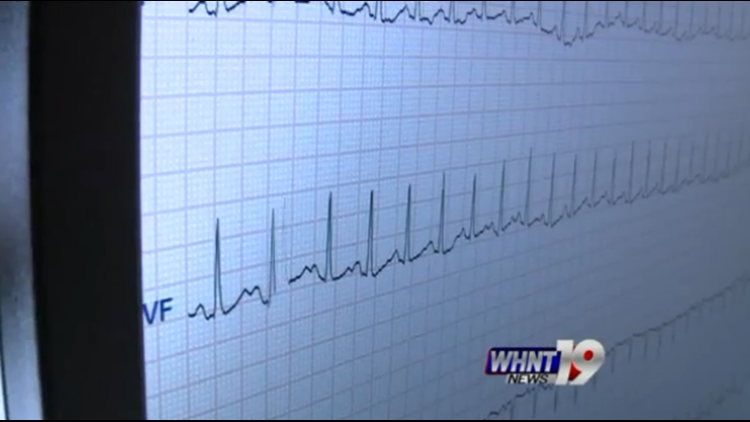More than 26 million people have been diagnosed with heart disease, and experts believe more than twice that many have it and don’t know it. The cardiac stress test is one of the primary tools doctors use to diagnose heart disease. But recently, one of our own learned the stress test can completely miss potentially deadly problems.
WHNT News 19′s Al Whitaker almost didn’t live to tell this story. He was forced to take a couple of months off last year to undergo triple cardiac bypass surgery. He initially took a stress test and it didn’t reveal any problems.
Below is Al’s account, in his own words.
The nurse called the day after I took my test last October and told me everything looked fine. Hundreds of people get that same phone call every year, not knowing that their stress test might have missed the heart problem destined to kill them.
The statistics are amazing. Heart disease is the leading cause of death in the United States. One out of every four people who die in this country die of heart disease. That’s over 600,000 people a year. It means thousands of Americans are walking around today with a silent killer inside of them, and the tragedy is many of those deaths could be prevented.
That’s the focus of Dr. Enrique Velasquez, a cardiologist at The Heart Center in Huntsville.
“In your case, the blood flow to the entire heart was diminished,” Velasquez told me. I went to see Dr. Velasquez in October. Based on my symptoms and other factors he scheduled a stress test.
In the basic stress test, the heart is monitored both at rest and during physical exertion, usually while the patient is on a treadmill. It’s designed to identify subtle changes in the function of the heart, changes that would cause the physician to want to investigate further. In my case, however, it found nothing.
The defining moment for me came the day after the test when the nurse called and said everything looked fine. It could have ended there, but I insisted ‘everything’s not fine, there’s definitely something wrong.’
How severe was my situation? “It was very severe,” Velasquez told me. “You already had a history, a previous history and so the pre-test probability of you having the disease was much higher than somebody else. The symptoms also, the type of symptoms, when the patient is telling you this feels like my heart pain, angina, then you’ve got to go with the clinical side,” Velasquez said.
That meant another test — an angiogram where a small probe is inserted into the femoral artery and pushed up through the body toward the heart. Only then could they see exactly what was going on and what the stress test had missed… A right main artery – completely closed, the left main almost completely blocked.
“Some people refer to it as the widowmaker,” said Dr. Velasquez. “The problem there is that artery gives circulation to about two-thirds of your heart. So most patients when they have an event or a heart attack from that location, they will not survive, even to come to the hospital.”
Dr. Velasquez explained my stress test failed to show any problems because my entire heart was starved for oxygen, so the changes brought on by the test appeared normal. But as with all medical tests, he says the results have to be taken in context with other factors.
“So you’ve always got to put into context, the patient, his risk factors, his history, and what they’re telling you,” Velasquez said.
To read the rest of this story, visit our affiliate station’s website WHNT – Channel 19 by clicking here.



